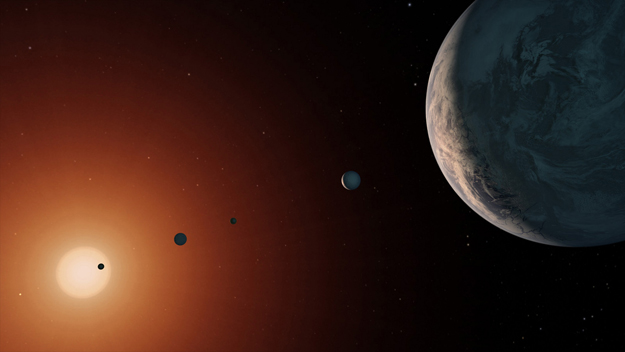The Chaotic Nature of TRAPPIST-1 Planetary Spin States

The TRAPPIST-1 system has 7 known terrestrial planets arranged compactly in a mean-motion resonant chain around an ultra-cool central star, some within the estimated habitable zone.
Given their short orbital periods of just a few days, it is often presumed that the planets are likely tidally locked such that the spin rate is equal to that of the orbital mean motion. However, the compact, and resonant, nature of the system implies that there can be significant variations in the mean motion of these planets due to their mutual interactions. Such fluctuations create a moving target between the spin rotation rate and the orbital mean motion, which we show can then have significant effects on the spin states of these planets. In this paper, we analyze, using detailed numerical simulations, the mean motion histories of the three planets that are thought to lie within or close to the habitable zone of the system: planets d, e, and f.
We demonstrate that, depending on the strength of the mutual interactions within the system, these planets can be pushed into spin states which are effectively non-synchronous. We find that it can produce significant wobble of the spin state, if not complete circulation in the co-rotating frame. We also show that these spin states are likely to be unable to sustain long-term stability, with many of our simulations suggesting that the spin evolves, under the influence of tidal synchronization forces, into quasi-stable attractor states, which last on timescales of thousands of years.
Alec M. Vinson, Daniel Tamayo, Brad M. S. Hansen
(Submitted on 27 May 2019)
Comments: 8 pages, 11 figures. Submitted to MNRAS
Subjects: Earth and Planetary Astrophysics (astro-ph.EP)
Cite as: arXiv:1905.11419 [astro-ph.EP] (or arXiv:1905.11419v1 [astro-ph.EP] for this version)
Submission history
From: Alec Vinson
[v1] Mon, 27 May 2019 18:00:16 UTC (500 KB)
https://arxiv.org/abs/1905.11419
Astrobiology






![From CO2- to H2O-dominated Atmospheres And Back — How Mixed Outgassing Changes The Volatile Distribution In Magma Oceans Around M Dwarf Stars [TRAPPIST-1]](https://astrobiology.com/wp-content/uploads/2025/05/From-CO2-to-H2O-dominated-1024x577.png)

